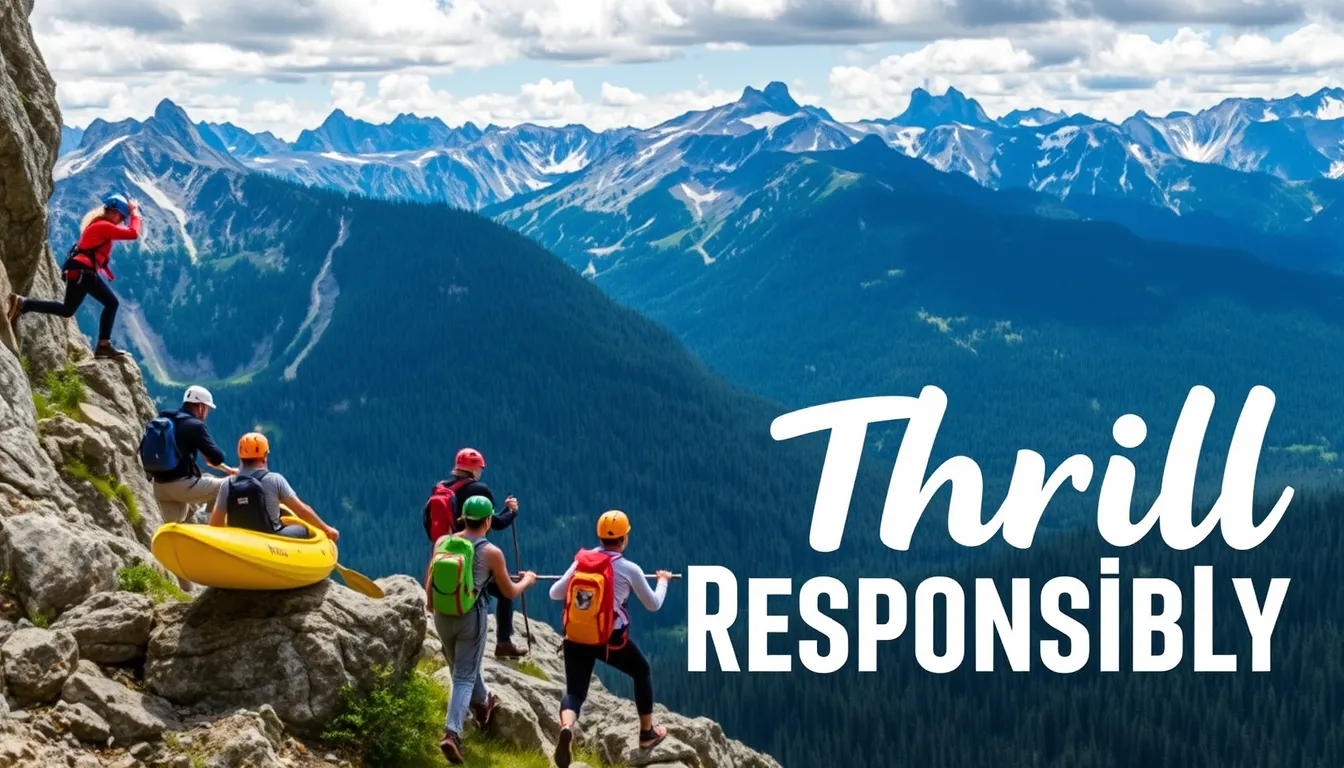Table of Contents
Adventure activity standards and their importance
Engaging in adventure activities is a thrilling way to connect with nature, challenge yourself, and build lasting memories. However, these activities often come with inherent risks that must be managed responsibly. That’s why adventure activity standards play a critical role in ensuring safety, maintaining quality, and fostering trust among participants. By adhering to established guidelines, operators can provide an enjoyable experience while minimizing potential hazards.
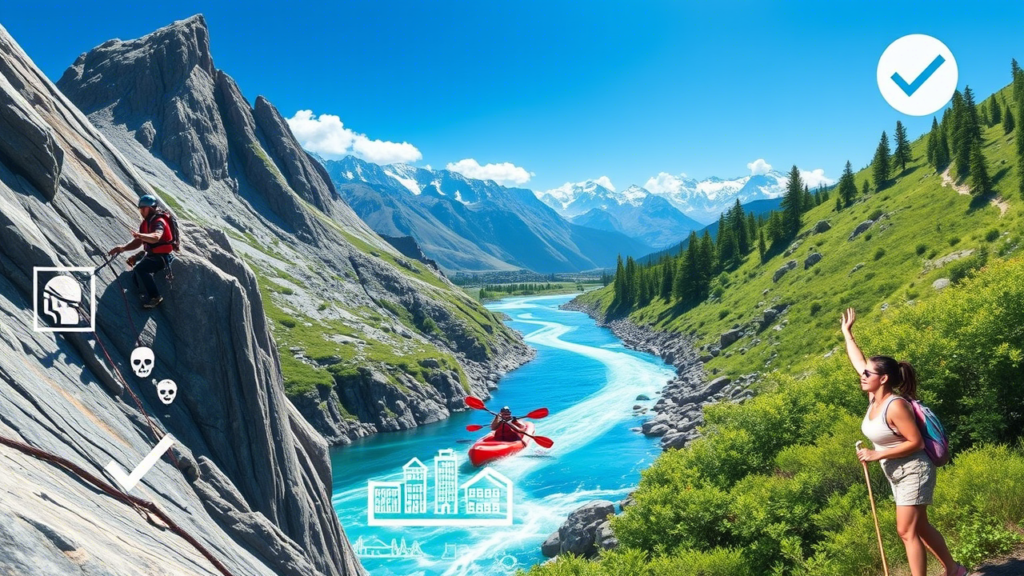
Why Adventure Activity Standards Matter
Adventure activities range from rock climbing and zip-lining to kayaking and bungee jumping. Each of these pursuits carries its own set of risks, which is why having standardized protocols is essential. These standards are designed to protect both participants and operators by setting clear expectations for equipment use, training requirements, and operational procedures.
For instance, if you’re planning to go on a white-water rafting trip, knowing that the operator follows recognized safety standards gives you peace of mind. It ensures that life jackets meet regulatory specifications, guides undergo rigorous training, and emergency response plans are in place. This level of assurance is vital when participating in activities where mistakes could lead to serious consequences.
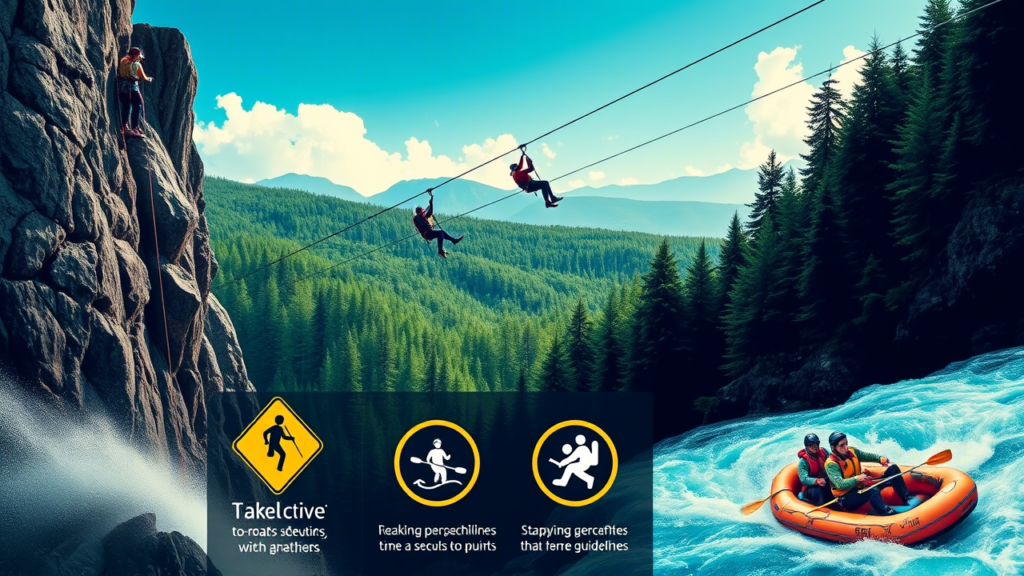
Key Components of Adventure Activity Standards
Standards typically cover several key areas to ensure comprehensive risk management:
- Equipment Quality: Ensuring all gear meets industry benchmarks. For example, helmets used in caving expeditions should comply with ASTM or EN standards (ASTM Website).
- Staff Training: Requiring staff to undergo certification programs specific to their roles. A ski instructor might need qualifications like those offered by PSIA-AASI (PSIA-AASI Certification).
- Operational Procedures: Establishing step-by-step processes for conducting activities safely, including pre-trip briefings and post-activity evaluations.
- Environmental Considerations: Promoting sustainable practices to minimize environmental impact during outdoor adventures.
By addressing these components, standards help create a safer environment for everyone involved in adventure tourism.
The Role of Regulatory Bodies

Various organizations worldwide contribute to developing and enforcing adventure activity standards. One prominent body is the International Organization for Standardization (ISO), which publishes guidelines applicable across industries. Another example is the Adventure Travel Trade Association (ATTA), which focuses specifically on promoting best practices within adventure travel (ATTA Website).
These bodies work closely with local governments, businesses, and stakeholders to tailor standards according to regional needs. For example, mountain climbing regulations in Nepal differ significantly from those in Switzerland due to varying terrain conditions and cultural contexts. Thus, collaboration between global entities and local authorities ensures relevance and effectiveness.
| Country | Main Regulatory Body | Focus Area |
|---|---|---|
| United States | National Recreation and Parks Association (NRPA) | Recreational Safety |
| New Zealand | Adventure Activities Federation (AAF) | Tourism Safety |
| Australia | Outdoor Recreation Industry Council (ORIC) | Sustainability & Safety |
This table highlights some examples of how different countries approach standardization based on their unique challenges and priorities.
Benefits Beyond Safety
While safety remains the primary focus of adventure activity standards, there are additional advantages worth noting:
- Enhanced Reputation: Operators who adhere to high-quality standards attract more customers because they project reliability and professionalism.
- Increased Participation: When people feel confident about the safety measures in place, they’re more likely to participate in new experiences.
- Economic Growth: Well-regulated adventure tourism sectors can drive economic development by attracting international visitors seeking trustworthy services.
Consider this scenario: A family looking to book a scuba diving vacation may choose one destination over another based solely on the presence of accredited dive centers. Such decisions highlight the importance of meeting recognized standards not only for participant welfare but also for business success.
Potential Challenges in Implementing Standards
Despite their benefits, implementing adventure activity standards isn’t without obstacles. Some common issues include:
- Cost Implications: Upgrading equipment or training staff to meet updated standards can strain smaller operators financially.
- Cultural Differences: What works in one region may not translate effectively elsewhere due to differing societal norms or available resources.
- Enforcement Difficulties: In certain regions, monitoring compliance with standards may prove challenging without adequate infrastructure or personnel.
To address these concerns, many organizations offer grants, subsidies, or mentorship programs aimed at supporting small businesses in achieving compliance. Additionally, fostering international dialogue helps bridge gaps caused by cultural discrepancies.
How You Can Support Standards Compliance

As someone interested in adventure activities, your actions can promote adherence to standards. Here’s how:
- Research Before Booking: Look for operators displaying certifications or affiliations with reputable organizations.
- Ask Questions: Don’t hesitate to inquire about safety protocols, staff qualifications, and contingency plans before committing to any activity.
- Provide Feedback: Share your experiences online through reviews or testimonials to encourage accountability among providers.
Your involvement contributes to creating a safer and more responsible adventure tourism ecosystem.
Adventure activity standards serve as the backbone of modern outdoor recreation, balancing excitement with responsibility. Whether you’re an enthusiast eager to explore new horizons or an operator striving to deliver exceptional service, understanding and embracing these standards benefits everyone involved. So next time you plan an adventure, remember to prioritize safety and seek out providers committed to upholding the highest levels of quality and care.
Safety protocols in adventure activities
Adventure activities are thrilling experiences that allow you to connect with nature, push your limits, and enjoy unforgettable moments. However, these activities often involve inherent risks due to their dynamic environments and physical demands. Understanding and implementing safety protocols in adventure activities is essential to ensure a secure and enjoyable experience for everyone involved.
Key Elements of Safety Protocols
Safety protocols in adventure activities revolve around several key elements designed to minimize risks while maximizing enjoyment. These protocols are developed based on years of research, expert advice, and lessons learned from real-life scenarios. Let’s explore the most important aspects:
- Risk Assessment: Before embarking on any adventure activity, it’s crucial to conduct a thorough risk assessment. This involves identifying potential hazards, evaluating their likelihood and severity, and planning ways to mitigate them. For example, if you’re planning a rock-climbing trip, assess the condition of the climbing gear, weather conditions, and terrain stability.
- Training and Certification: Adventure activity operators must ensure that guides and participants undergo proper training. Guides should hold certifications relevant to the activity, such as Wilderness First Responder (WFR) or Swiftwater Rescue Technician. Participants should also receive basic safety training tailored to the specific activity.
- Equipment Standards: Using high-quality, well-maintained equipment is non-negotiable. Whether you’re kayaking, zip-lining, or hiking, always check that your gear meets industry standards. For instance, helmets used in adventure activities should comply with ASTM F2040 or EN 1078 standards. Visit Adventure Standards for more detailed guidelines.
Communication and Emergency Preparedness
Effective communication plays a vital role in ensuring safety during adventure activities. Establish clear channels of communication before starting the activity. If you’re heading into remote areas, consider carrying satellite phones or personal locator beacons (PLBs). Knowing how to use these devices can save lives in emergencies.
In addition to communication tools, having an emergency action plan is critical. This plan should outline steps to take in case of accidents, injuries, or severe weather changes. Ensure all participants are familiar with the plan and know who to contact in case of an emergency. For further guidance on creating an emergency plan, refer to resources like The Outdoor Foundation.
Environmental Considerations
Adventure activities often take place in natural settings, making environmental awareness an integral part of safety protocols. Practicing Leave No Trace principles helps protect ecosystems and ensures sustainable enjoyment for future generations. Here are some tips:
- Pack out all trash and avoid disturbing wildlife.
- Stay on designated trails to prevent soil erosion.
- Use biodegradable products when necessary.
By respecting the environment, you not only contribute to its preservation but also reduce risks associated with unstable terrains or interactions with wildlife.
Physical Fitness and Health Checks
Your physical fitness level directly impacts your ability to safely participate in adventure activities. Prioritize regular exercise to build endurance, strength, and flexibility. Additionally, consult a healthcare professional before engaging in strenuous activities, especially if you have pre-existing medical conditions.
A health check-up can identify potential issues that might affect your performance during the activity. For example, individuals with heart conditions may need special precautions when participating in high-altitude treks. Always disclose your health status to the activity organizers so they can provide appropriate support.
Mental Preparation and Team Dynamics
Mental preparation is just as important as physical readiness. Adventure activities can be mentally demanding, requiring focus, problem-solving skills, and emotional resilience. Practice mindfulness techniques to stay calm under pressure and maintain situational awareness.
Team dynamics also play a significant role in safety. Building trust among team members fosters better communication and cooperation during challenging situations. Encourage open dialogue and respect diverse perspectives within the group. Remember, teamwork enhances both safety and enjoyment.
Statistical Insights into Adventure Activity Safety
Data analysis provides valuable insights into the effectiveness of safety protocols. According to a study published by National Association for Search and Rescue, approximately 80% of accidents in outdoor activities could have been prevented with proper planning and adherence to safety guidelines.
| Activity Type | Accident Rate (%) | Preventable (%) |
|---|---|---|
| Rock Climbing | 12 | 90 |
| Whitewater Rafting | 8 | 85 |
| Hiking | 20 | 75 |
These statistics emphasize the importance of following established safety protocols. By doing so, you significantly reduce the chances of accidents occurring.
Continuous Improvement and Learning
Safety protocols in adventure activities are not static; they evolve with advancements in technology, research, and participant feedback. Stay updated on the latest developments by attending workshops, reading industry publications, and networking with experienced professionals.
Additionally, encourage feedback from participants after each activity. Their input can highlight areas for improvement and help refine existing protocols. Organizations like American Alpine Club offer valuable resources and forums for sharing knowledge and best practices.
Remember, the ultimate goal of safety protocols is to create a balance between excitement and security. By prioritizing safety without compromising fun, you can fully embrace the spirit of adventure while protecting yourself and others.
Certification processes for adventure operators
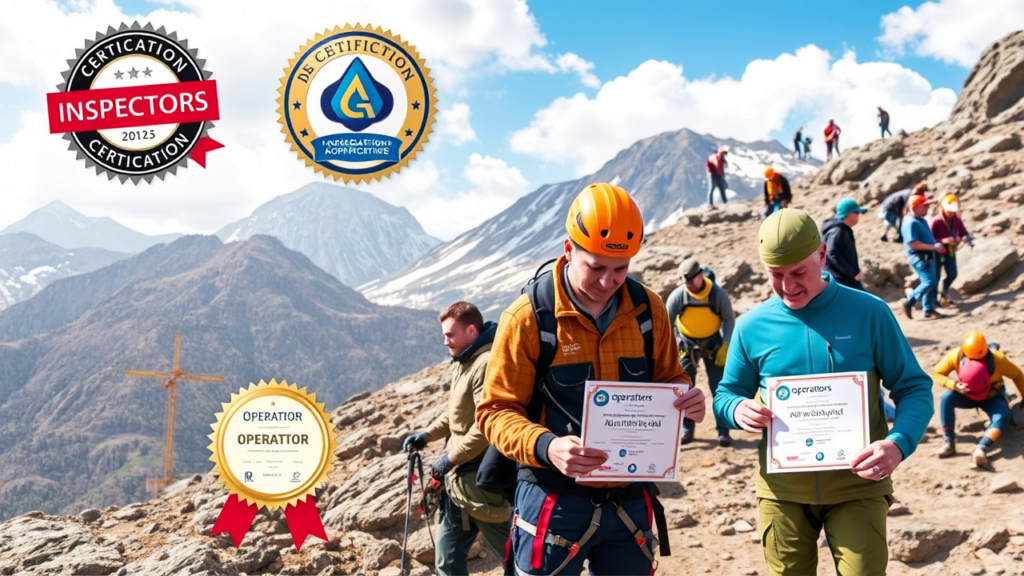
Understanding Adventure Activity Standards
When it comes to adventure activities, safety and quality are paramount. Whether you’re a thrill-seeker looking for the next adrenaline rush or an operator aiming to provide unforgettable experiences, understanding adventure activity standards is crucial. These standards ensure that both participants and operators adhere to guidelines designed to minimize risks while maximizing enjoyment.
Adventure activities encompass a wide range of pursuits, from rock climbing and zip-lining to kayaking and bungee jumping. Each activity carries its own set of challenges and potential hazards. That’s why regulatory bodies worldwide have established certification processes for adventure operators. These certifications not only protect customers but also enhance the reputation of businesses in this dynamic industry.
Certification processes typically involve several key steps. First, operators must demonstrate compliance with local laws and regulations. This includes obtaining necessary permits and licenses. For instance, if your business involves water-based activities like rafting, you might need to follow environmental protection rules specific to the area where you operate. The International Ecotourism Society (TIES) provides valuable resources on sustainable tourism practices.
Key Components of Certification
Certification isn’t just about paperwork; it requires thorough evaluation across multiple dimensions. Below are some essential components:
- Safety Protocols: Operators must implement robust safety measures tailored to their specific activities. This includes regular equipment inspections, staff training, and emergency response plans.
- Staff Qualifications: Instructors and guides should hold relevant qualifications, such as first aid certifications or specialized adventure training. Organizations like the American Mountain Guides Association offer professional certifications for outdoor leaders.
- Customer Experience: While safety is critical, so too is ensuring customers enjoy a high-quality experience. Feedback mechanisms can help identify areas for improvement.
- Environmental Responsibility: Adventure activities often take place in natural settings. Certified operators commit to minimizing their ecological footprint through eco-friendly practices.
Steps Toward Certification
Achieving certification involves a structured process. Here’s how it generally works:
- Initial Assessment: Begin by reviewing existing operations against recognized standards. Identify gaps and develop an action plan to address them.
- Training Programs: Enroll staff in appropriate courses to meet certification requirements. Many organizations provide online learning modules for convenience.
- Site Inspections: Independent auditors visit your location to verify adherence to safety and operational standards.
- Final Review: Once all criteria are met, submit documentation for final review. Upon approval, you receive your certification.
| Step | Description | Resources |
|---|---|---|
| Initial Assessment | Evaluate current practices versus industry benchmarks. | Adventure Travel Trade Association |
| Training Programs | Participate in accredited training sessions. | The Outdoor Institute |
| Site Inspections | Conduct third-party audits to confirm compliance. | Association of Canadian Camps |
| Final Review | Submit completed forms for official certification. | ISO Adventure Tourism Standards |
One important aspect of certification is staying updated with evolving standards. Technology advancements, changing customer expectations, and new research findings continuously shape best practices. For example, wearable tech now allows real-time monitoring of participant health during extreme sports. Staying informed about these developments ensures your business remains competitive and compliant.
Benefits of Certification
Certified adventure operators enjoy numerous advantages. Firstly, they build trust with clients who feel confident knowing rigorous checks have been performed. Secondly, certifications open doors to partnerships with larger organizations seeking reliable collaborators. certified operators contribute positively to the community by promoting responsible tourism practices.
Consider this scenario: A family planning a vacation chooses between two zip-line tours—one certified and one uncertified. Chances are, they’ll opt for the certified option due to perceived reliability. Thus, certification translates directly into increased bookings and revenue.
Moreover, certified operators play a vital role in shaping public perception of adventure tourism. By consistently delivering safe and enjoyable experiences, they reinforce the idea that adventure activities can be fun without compromising security. Resources like the Adventure Standards Alliance offer detailed insights into global initiatives aimed at standardizing adventure tourism.
Challenges in Obtaining Certification
Despite its benefits, achieving certification isn’t always straightforward. Costs associated with training, equipment upgrades, and site inspections can strain budgets, especially for small businesses. Additionally, maintaining certification demands ongoing effort, including periodic re-assessments and continuous education for staff members.
However, overcoming these hurdles yields significant rewards. Certified operators differentiate themselves in a crowded marketplace, attracting discerning customers willing to pay premium prices for peace of mind. Furthermore, embracing certification fosters a culture of excellence within the organization, motivating employees to strive for higher performance levels.
adhering to adventure activity standards and pursuing certification represents more than mere compliance—it embodies commitment to safety, quality, and sustainability. As the adventure tourism sector grows, so does the importance of standardized practices. By following established protocols and leveraging available resources, operators position themselves for long-term success while contributing meaningfully to the broader travel industry.
Remember, whether you’re scaling mountains or navigating rivers, every adventure begins with preparation. Equip yourself with knowledge of adventure activity standards, and embark confidently on the path toward certification. Your journey awaits!
Environmental considerations in adventure tourism
Understanding the Impact of Adventure Tourism on Nature
Adventure tourism offers a thrilling escape from everyday life, allowing travelers to explore breathtaking landscapes and engage in exhilarating activities. However, with its growing popularity comes an increased responsibility to protect the environments we visit. The natural world is fragile, and adventure tourism must balance excitement with sustainability. As you plan your next adventure, consider how your choices can either harm or help the ecosystems you encounter.
Adventure tourism often involves activities such as hiking, rock climbing, kayaking, and wildlife safaris. While these activities provide unforgettable experiences, they also pose risks to the environment if not managed responsibly. For instance, excessive foot traffic on trails can lead to soil erosion, damage plant life, and disturb animal habitats. Similarly, improper waste disposal during outdoor adventures contributes to pollution, harming both land and water ecosystems.
To minimize environmental damage, adventure tour operators and participants must adhere to adventure activity standards designed to promote sustainable practices. These standards emphasize the importance of leaving no trace behind, respecting wildlife, and using eco-friendly equipment. By following these guidelines, adventurers can ensure that future generations will have the same opportunities to enjoy nature’s beauty.
Key Practices for Sustainable Adventure Tourism
Here are some actionable steps you can take to reduce your environmental footprint while enjoying adventure tourism:
- Plan Ahead: Research your destination thoroughly before arriving. Look for information about local conservation efforts and any restrictions in place to protect the area. Websites like World Wildlife Fund offer valuable insights into global conservation initiatives.
- Stay on Marked Trails: Stick to designated paths when hiking or biking to prevent unnecessary wear and tear on surrounding vegetation. This simple practice helps preserve the natural landscape for everyone.
- Pack Out What You Bring In: Carry reusable containers and bags to store trash until you reach appropriate disposal sites. Never leave litter behind, even if it seems biodegradable.
- Respect Wildlife: Keep a safe distance from animals and avoid feeding them. Interacting too closely can disrupt their natural behaviors and put both you and the creatures at risk.
Evaluating Eco-Friendly Tour Operators
When selecting an adventure tour operator, look for companies committed to environmentally responsible practices. Many organizations now follow international certifications, such as the Global Sustainable Tourism Council (GSTC) standards, which evaluate businesses based on their commitment to sustainability. Some key factors to consider include:
- Does the company prioritize low-impact transportation options?
- Are guides trained in Leave No Trace principles?
- How does the business contribute to local community development and conservation projects?
For example, Ecotourism.org provides resources for identifying certified eco-tour operators worldwide. By choosing reputable providers, you support businesses that genuinely care about preserving natural resources.
The Role of Technology in Minimizing Environmental Impact
Advancements in technology play a crucial role in reducing the negative effects of adventure tourism. Innovations such as solar-powered camping gear, lightweight recyclable materials, and GPS navigation systems enable adventurers to enjoy their trips without compromising the environment. Additionally, mobile apps developed by organizations like The Nature Conservancy help users identify protected areas and learn more about regional flora and fauna.
A table summarizing some popular tech tools for sustainable adventure tourism might look like this:
| Tool Name | Purpose | Website |
|---|---|---|
| Solar Lanterns | Provides lighting without relying on fossil fuels | Goal Zero |
| Trail Map Apps | Helps navigate trails while minimizing paper use | AllTrails |
| Biodegradable Cleaning Products | Reduces chemical runoff into water sources | Seventh Generation |
Engaging Local Communities in Conservation Efforts
Local communities often hold deep connections to the lands visited by adventure tourists. Engaging with these groups fosters mutual respect and encourages collaboration in protecting shared resources. Supporting locally owned businesses ensures that economic benefits remain within the region, empowering residents to invest in long-term conservation strategies.
For instance, many indigenous tribes around the world offer guided tours showcasing traditional knowledge of medicinal plants and sustainable hunting practices. Participating in these experiences not only enriches your understanding of different cultures but also directly supports environmental stewardship initiatives.
Maintaining Balance Between Adventure and Preservation
Ultimately, adventure tourism has the potential to inspire people to care more deeply about the planet. When approached mindfully, it can serve as a powerful tool for raising awareness about pressing environmental issues. By adopting responsible behaviors and supporting ethical operators, you become part of a global movement striving to safeguard Earth’s precious ecosystems.
Remember, every small action counts. Whether it’s picking up someone else’s trash along a trail or opting for carbon-neutral flights, your choices matter. Together, we can create a future where adventure tourism thrives alongside thriving natural environments.
Equipment requirements and quality checks
When it comes to adventure activities, the importance of proper equipment cannot be overstated. Whether you’re embarking on a hiking trail, rock climbing, or engaging in water sports, the right gear ensures both safety and enjoyment. Adventure activity standards dictate that participants must use equipment meeting specific quality checks. Let’s delve into what these requirements entail and why they matter.
Understanding Equipment Standards
Adventure activity standards emphasize the necessity of using reliable and tested equipment. For instance, if you’re planning a mountain biking expedition, your bike should meet certain benchmarks for durability and performance. Similarly, when diving, scuba gear needs to comply with international safety regulations. These standards are not just recommendations; they are crucial guidelines designed to protect adventurers from potential hazards.
To ensure compliance, manufacturers undergo rigorous testing processes. Organizations like the International Climbing and Mountaineering Federation (UIAA) set global standards for climbing and mountaineering equipment. Their certifications guarantee that products such as ropes, harnesses, and helmets can withstand extreme conditions. By adhering to these standards, users reduce risks significantly.
Key Components of Quality Checks
Quality checks involve several stages to verify that equipment meets adventure activity standards. Here’s a breakdown:
- Material Inspection: The materials used in manufacturing must be durable and resistant to environmental factors. For example, waterproof fabrics are essential for outdoor clothing.
- Performance Testing: Equipment is subjected to simulations replicating real-world scenarios. This ensures it performs optimally under stress. A parachute, for instance, undergoes extensive drop tests before approval.
- User Feedback Analysis: Manufacturers often gather feedback from professional adventurers who test their products extensively. This helps identify areas for improvement.
- Compliance Audits: Regular audits by third-party organizations confirm adherence to industry standards. Such audits provide transparency and build trust among consumers.
These checks collectively contribute to ensuring that every piece of equipment functions safely and effectively during an adventure.
Essential Gear for Popular Adventures
Different activities demand specific types of gear. Below is a table outlining some common adventure activities along with recommended equipment:
| Activity | Required Equipment | Standards/Regulations |
|---|---|---|
| Hiking | Trekking poles, sturdy boots, hydration systems | ASTM International footwear standards |
| Rock Climbing | Rope, carabiners, climbing shoes | UIAA safety ratings |
| Scuba Diving | BCD (Buoyancy Control Device), regulator, wetsuit | PADI equipment guidelines |
| Paragliding | Wing, harness, helmet | CEN (European Committee for Standardization) norms |
Referencing this table allows adventurers to prepare adequately while staying informed about relevant standards.
Why Regular Maintenance Matters
Even the best equipment requires regular maintenance to maintain its effectiveness. Neglecting upkeep could lead to failures during critical moments. Consider the following tips for maintaining your gear:
- Inspect Before Use: Always check your equipment thoroughly before each outing. Look for signs of wear and tear, such as frayed ropes or cracked helmets.
- Follow Manufacturer Instructions: Cleaning and storage guidelines provided by manufacturers help prolong the lifespan of your gear. Visit websites like MEC for detailed care instructions.
- Schedule Professional Inspections: Periodically send your equipment to certified technicians for thorough evaluations. They can detect issues you might overlook.
Maintenance practices not only enhance safety but also save money in the long run by extending the life of your gear.
Environmental Considerations
As awareness grows regarding environmental sustainability, many adventurers seek eco-friendly options. Some companies now produce equipment using sustainable materials without compromising quality. For example, Patagonia offers recycled polyester jackets that meet high-performance standards while minimizing ecological impact.
Choosing environmentally responsible gear aligns with modern adventure activity standards. It reflects a commitment to preserving natural landscapes for future generations. Explore resources like Outdoor Industry Association to learn more about sustainable practices within the adventure sector.
Training and Education
No amount of advanced equipment can replace proper training. Understanding how to use your gear correctly enhances both safety and efficiency. Many organizations offer courses tailored to various adventure activities. For example, the American Alpine Club provides workshops on technical climbing skills.
Additionally, familiarizing yourself with emergency procedures is vital. Knowing how to administer first aid or signal for help in case of an accident can make all the difference. Online platforms like REI Expert Advice provide valuable tutorials covering a wide range of topics.
Final Thoughts on Preparedness
Adventure activity standards exist to safeguard participants and enrich their experiences. By prioritizing quality equipment, conducting routine inspections, embracing sustainable choices, and investing in education, you empower yourself to tackle challenges confidently. Remember, preparation is key to unlocking the full potential of any adventure.
Always verify that your gear complies with recognized standards, perform regular maintenance, and stay updated on best practices. With the right mindset and tools, every journey becomes an opportunity for growth and discovery.
Training programs for adventure guides
Embarking on an adventure activity requires a well-trained guide to ensure safety, enjoyment, and educational value for participants. Adventure guides play a crucial role in leading groups through various terrains and activities while adhering to adventure activity standards. These professionals undergo rigorous training programs that prepare them for the challenges they may face in their line of work. Below is an exploration of what these training programs entail and why they are essential.
Core Competencies in Guide Training Programs
A successful adventure guide must possess a diverse set of skills, ranging from technical expertise to interpersonal communication. Training programs focus on developing these competencies by offering comprehensive modules tailored to different types of adventures. For instance, a hiking guide might need knowledge about wilderness first aid, trail navigation, and environmental awareness, whereas a kayaking guide would require proficiency in water rescue techniques and weather forecasting.
To give you a clearer picture, here’s a breakdown of key areas covered in most guide training programs:
- Safety Protocols: Understanding emergency procedures and risk management strategies is paramount. Guides learn how to assess potential hazards and implement preventive measures during tours.
- Technical Skills: Depending on the activity, this could involve mastering climbing techniques, operating specialized equipment, or handling wildlife encounters.
- Customer Service: Excellent communication and leadership abilities help create memorable experiences for clients. Guides are trained to adapt their approach based on group dynamics and individual needs.
- Environmental Awareness: Promoting sustainable practices ensures minimal impact on natural environments. This includes teaching participants Leave No Trace principles (Leave No Trace Center for Outdoor Ethics).
Regulatory Compliance and Certification
In addition to skill development, guide training programs emphasize compliance with adventure activity standards established by governing bodies. These regulations vary depending on location but generally cover aspects like insurance requirements, operational guidelines, and participant qualifications. By obtaining certifications from recognized organizations such as the International Mountain Bicycling Association (IMBA) or the American Canoe Association (ACA), guides demonstrate their commitment to professionalism and safety.
Below is a table summarizing some common certifications available across different adventure disciplines:
| Activity | Certifying Body | Duration | Focus Areas |
|---|---|---|---|
| Hiking & Trekking | National Outdoor Leadership School (NOLS) | Varies; typically 2-6 weeks | Wilderness medicine, leadership, environmental ethics |
| Rock Climbing | American Mountain Guides Association (AMGA) | Several days to months | Technical climbing skills, route finding, client instruction |
| Whitewater Rafting | American Canoe Association (ACA) | Weekend workshops | Rescue techniques, river reading, paddling fundamentals |
Practical Experience: The Cornerstone of Effective Training
While theoretical learning forms the foundation of guide training programs, practical experience remains indispensable. Trainees often participate in supervised outings where they apply classroom lessons in real-world scenarios. These opportunities allow them to refine their skills under controlled conditions before leading independent trips.
For example, aspiring scuba diving instructors complete numerous dives alongside experienced mentors. They practice teaching new divers basic skills while ensuring everyone stays safe underwater. Similarly, mountain biking guides spend hours riding trails to familiarize themselves with terrain features and develop efficient riding techniques.
Continuous Improvement Through Professional Development
The field of adventure guiding evolves constantly due to advancements in technology, shifts in consumer preferences, and emerging trends within the industry. Therefore, even certified guides must engage in ongoing education to stay current. Many organizations offer advanced courses, workshops, and conferences designed specifically for seasoned professionals seeking to enhance their expertise.
One notable initiative is the Adventure Travel Trade Association’s (ATTA) annual AdventureELEVATE event. It brings together leaders from around the globe to share insights, network, and explore innovative approaches to delivering exceptional customer experiences.
Moreover, staying updated on adventure activity standards is crucial since regulatory frameworks change over time. Subscribing to newsletters, joining online forums, and participating in webinars can keep guides informed about relevant updates affecting their practice.
Mentorship: A Valuable Resource for Emerging Guides
Established guides frequently take on mentorship roles, providing guidance and support to newcomers entering the profession. Mentorship fosters personal growth, builds confidence, and accelerates learning among trainees. Mentors share valuable tips gained through years of experience, helping mentees avoid common pitfalls and navigate challenges more effectively.
Consider reaching out to local outdoor clubs or professional associations to connect with potential mentors. Platforms like Meetup (Meetup) also facilitate networking opportunities for individuals interested in adventure sports.
Fostering Community Engagement
Beyond technical competence, effective guides contribute positively to communities they serve. They promote cultural exchange, preserve historical sites, and encourage responsible tourism practices. community engagement initiatives into training curricula helps cultivate socially conscious practitioners who prioritize sustainability alongside profitability.
For instance, ecotourism projects led by trained guides empower indigenous populations by showcasing their traditions and fostering economic independence. Such efforts align closely with global movements advocating ethical travel choices.
Guide training programs represent much more than mere certification processes—they serve as stepping stones toward becoming skilled ambassadors of adventure activities. By emphasizing adherence to adventure activity standards, nurturing core competencies, encouraging continuous improvement, and promoting community involvement, these programs equip guides with tools necessary to thrive professionally while making lasting impacts on participants’ lives.
Legal regulations impacting adventure activities
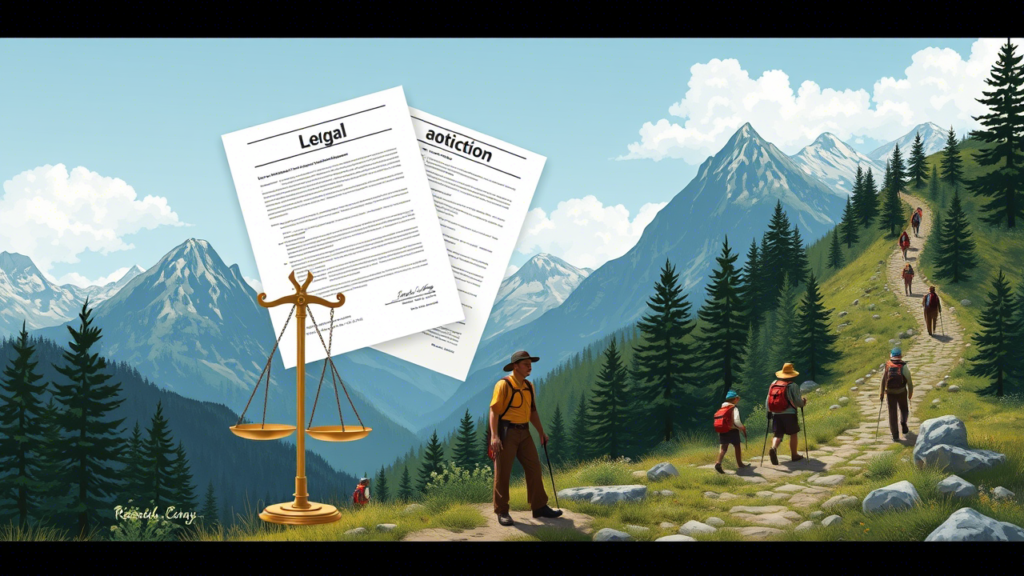
Adventure activities are thrilling experiences that allow individuals to explore the outdoors and challenge their limits. However, these activities come with inherent risks that necessitate strict legal regulations to ensure participant safety. Governments worldwide have recognized the importance of creating a framework that governs adventure activities, balancing excitement with responsibility. This article delves into the various legal aspects impacting adventure activities and highlights how they shape the industry.
Understanding Adventure Activity Standards
Adventure activity standards serve as guidelines for operators to adhere to in order to minimize risks while maximizing enjoyment. These standards vary by country but generally cover areas such as equipment quality, staff qualifications, emergency preparedness, and environmental impact. For example, Adventure New Zealand, an organization promoting safe practices, outlines specific requirements for adventure tourism operators within the country.
In addition to national standards, international bodies also play a significant role in shaping adventure activity regulations. Organizations like the International Federation of Mountain Guides Associations (IFMGA) set global benchmarks for guiding certifications, ensuring consistency across borders. By adhering to these standards, adventure companies can provide safer experiences for participants.
Risk Management Protocols
Effective risk management is crucial when organizing adventure activities. Operators must conduct thorough assessments of potential hazards associated with each activity and implement measures to mitigate them. Key components of risk management protocols include:
- Pre-Activity Briefings: Informing participants about the nature of the activity, potential risks, and safety procedures.
- Equipment Inspections: Regularly checking all gear for wear and tear before use.
- Staff Training: Ensuring all personnel are adequately trained in first aid, rescue techniques, and customer service.
- Emergency Response Plans: Developing clear plans for handling accidents or emergencies during activities.
For instance, organizations operating whitewater rafting tours often require lifeguards certified in swift water rescue training to accompany groups on trips. Such precautions help reduce the likelihood of incidents occurring and improve response times should something go wrong.
Environmental Considerations
Adventure activities frequently take place in natural settings, making environmental protection another critical aspect of regulatory compliance. Laws governing land use, waste disposal, and wildlife conservation aim to preserve ecosystems while allowing sustainable recreation opportunities. The Leave No Trace Center for Outdoor Ethics provides valuable resources for minimizing human impact on nature through its seven principles.
Moreover, some regions impose restrictions on certain types of adventures due to ecological concerns. For example, climbing routes may be closed seasonally to protect nesting birds or fragile vegetation. Adventure businesses must stay informed about local regulations affecting their operations and adjust accordingly to avoid penalties or harm to the environment.
Insurance Requirements
Another important legal consideration for adventure activity providers is insurance coverage. Liability insurance protects operators against claims arising from injuries sustained by participants during activities. Adequate coverage ensures financial stability even if unforeseen events occur.
Participants themselves may also need personal accident insurance depending on the level of risk involved in the chosen activity. Many reputable tour operators recommend or mandate this type of coverage as part of booking agreements. Websites like World Nomads offer specialized travel insurance plans tailored specifically for adventurers.
Compliance Challenges Faced by Operators
Despite best efforts, maintaining full compliance with all applicable laws and regulations can pose challenges for adventure activity providers. Rapid changes in legislation, varying interpretations among jurisdictions, and resource constraints often complicate adherence processes. Small-scale operators might struggle more than larger enterprises due to limited budgets for legal consultation and staff training.
To overcome these hurdles, collaboration between industry stakeholders proves beneficial. Sharing knowledge, pooling resources, and advocating for uniform standards simplifies compliance efforts for everyone involved. Additionally, leveraging technology solutions such as digital checklists and automated reporting tools streamlines operational workflows, reducing the likelihood of oversights.
| Country | Key Regulation | Relevant Authority |
|---|---|---|
| United States | Occupational Safety and Health Act (OSHA) | OSHA |
| Australia | Work Health and Safety Act 2011 | Safe Work Australia |
| Canada | Adventure Tourism Safety Act | Tourism British Columbia |
As adventure tourism continues to grow globally, so does the need for robust legal frameworks supporting safe and responsible practices. By staying updated on evolving regulations and embracing proactive approaches to risk management, adventure activity providers can create memorable experiences while safeguarding both people and places.
Key Takeaway:
Adventure activity standards play a crucial role in ensuring the safety, sustainability, and overall quality of adventure tourism experiences. These standards are not just guidelines but essential frameworks that protect participants, preserve natural environments, and uphold ethical practices within the industry. By understanding and implementing these standards, adventure operators can create memorable and secure experiences for their clients while maintaining compliance with legal regulations.
Safety protocols form the backbone of adventure activities. Whether you’re rock climbing, whitewater rafting, or exploring remote wilderness areas, having clear safety measures in place is vital to minimize risks. Operators must prioritize risk assessments, emergency preparedness, and communication systems to ensure participant well-being. This proactive approach helps build trust with customers and reinforces the credibility of the business.
Certification processes for adventure operators further enhance accountability and professionalism. Certified operators undergo rigorous evaluations to demonstrate they meet industry benchmarks for safety, training, and environmental stewardship. For those seeking adventure tours, choosing certified providers guarantees adherence to recognized standards and reduces potential hazards.
Environmental considerations also hold significant importance in adventure tourism. Adventure activities often take place in fragile ecosystems, making it imperative for operators to adopt eco-friendly practices. Minimizing waste, respecting wildlife habitats, and educating participants about sustainable travel contribute to preserving natural landscapes for future generations.
Equipment requirements and quality checks are another critical aspect of adventure activity standards. High-quality gear that meets international specifications ensures reliability during challenging conditions. Regular inspections and maintenance schedules help prevent equipment failures, which could otherwise jeopardize participant safety.
Training programs for adventure guides emphasize skill development and situational awareness. Well-trained guides act as ambassadors for both the company and the environment, providing valuable insights into local cultures and ecosystems while prioritizing guest safety. Their expertise enhances the overall experience, turning ordinary trips into extraordinary journeys.
Legal regulations impacting adventure activities vary by region but universally aim to safeguard public interest. Compliance with these laws protects businesses from liabilities while promoting responsible tourism practices. Understanding this comprehensive framework allows operators to thrive sustainably while delivering exceptional adventures. embracing adventure activity standards empowers both providers and participants to enjoy thrilling experiences responsibly and confidently.
Conclusion
Understanding adventure activity standards is crucial for ensuring the safety, sustainability, and legal compliance of adventure tourism. By adhering to these guidelines, you contribute to a safer and more responsible industry. Safety protocols form the backbone of adventure activities, protecting both participants and operators from potential risks. These protocols emphasize preparedness, emergency response, and hazard mitigation, giving adventurers peace of mind while exploring thrilling experiences.
Certification processes for adventure operators play a vital role in maintaining high-quality service delivery. Certified operators undergo rigorous evaluations to ensure they meet established benchmarks, offering customers reliable and trustworthy services. At the same time, environmental considerations remind us that adventure tourism must respect nature. Minimizing ecological impact through sustainable practices ensures future generations can enjoy these natural wonders as well.
Equipment requirements and quality checks are non-negotiable aspects of adventure activities. Properly maintained gear reduces accidents and enhances performance during outdoor pursuits. Alongside this, training programs for adventure guides equip them with essential skills to handle diverse situations effectively. Knowledgeable guides enhance your experience by combining technical expertise with an understanding of local environments.
Legal regulations governing adventure activities provide a framework for accountability and responsibility within the industry. They help protect participants’ rights while ensuring businesses operate ethically. Together, all these elements create a robust foundation for adventure tourism—one where excitement meets safety, sustainability, and professionalism. Embracing these principles allows everyone involved to thrive while preserving the magic of adventure travel.
Frequently Asked Questions
- What are adventure activity standards?
They are established guidelines that set safety, quality, and environmental protocols for adventure tourism, ensuring both participants and operators adhere to best practices. - Why are adventure activity standards important?
They help minimize risks, ensure proper equipment and staff training, and build trust among adventurers, allowing for safe and enjoyable outdoor experiences. - What key components do these standards cover?
They typically include equipment quality checks, staff training and certification, detailed operational procedures, comprehensive risk assessments, and environmental sustainability measures. - Who develops and enforces these standards?
Global and local regulatory bodies—such as the International Organization for Standardization (ISO), the Adventure Travel Trade Association (ATTA), and various national agencies—collaborate to create and enforce these guidelines. - What benefits do adventure activity standards offer?
They enhance safety, improve customer confidence and operator reputation, drive increased participation, and can contribute to economic growth through more reliable and professional services. - What challenges can arise when implementing these standards?
Challenges include financial constraints for upgrading equipment or training, variations in cultural practices, and difficulties in monitoring compliance in regions with limited infrastructure. - How can participants support compliance with adventure activity standards?
Before booking, research operators’ certifications and safety protocols, ask questions about their procedures, and share feedback on your experiences to encourage accountability. - How do legal regulations impact adventure activities?
Legal frameworks define mandatory safety protocols, equipment standards, and insurance requirements, ensuring that operators maintain compliance while protecting both participants and the environment.

